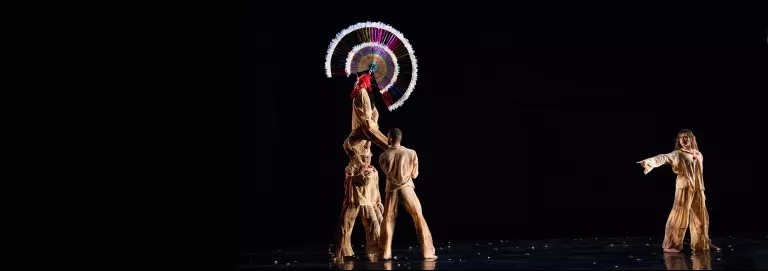
Captioning
In celebration of their 75th anniversary, Artistic Director Dante Puleio leads the company in a program that reveals aspects of José Limón’s life and honors his Mexican-American legacy. The evening includes the Northrop Centennial Commission, Migrant Mother, by Raúl Tamez; the reimagination of Limón’s first major solo and partially lost work, Danzas Mexicanas; and co-founder Doris Humphreys' timeless Air for the G String. The Limón modern dance classic Psalm (featuring student performers from UMN’s Dance Department) will include the original score not heard by audiences in decades.
“Limón’s heroic style felt fresh with possibilities.” —The New York Times
“As long as we lie, hate, envy and betray, José Limón’s work will continue to fascinate.” —The Washington Post
“The exquisite choreography and the dancers' technical brilliance confers a complete depiction of Limón’s depth of humanity.” —Eye on Dance
The content below derives from the Northrop Across Campus Program that supports Northrop's mission towards intersections between performing arts and education for the benefit of all participants now and for generations to come.
Find ways to make thematic connections to these suggested topics:
Take a deeper dive with these resources that provide additional information about the performers, the history of the artform, and the artistic process.
Britannica – José Limón Biography
The New York Times – Review:The Limón Dance Company Navigates the Present
The New York Times – Review:The Limón Dance Company Navigates the Present – U of M Library
YouTube – Recorded interview with José Limón
A Latinx Influence in Modern Dance – UC Santa Barbara Interview with Kiri Avelar
Start a conversation about the performance, or encourage reflection, using these questions as inspiration.
In a rehearsal session, José Limón was asked, “What is the function of the audience in Modern Dance?” to which he replied, “we like very much to have the audience receive a challenge, to meet us halfway if possible, to say here’s an idea, will you rise to it? Will you participate?”
Limón also mentioned that, “we like the audience to experience a new, a fresh feeling of an old emotion.”
Dante Puleio is the sixth Artistic Director in the company’s 75-year history. He is committed to contextualizing mid-20th century dance for contemporary artists and audiences by celebrating José Limón's historical legacy, and reimagining Limón's intention and vision to reflect the rapidly shifting 21st century landscape. The program will include new and reimagined works exploring themes of heritage, colonization, and artistic inspiration.
Migrant Mother, a Northrop Centennial Commission, is a new work choreographed by Raúl Tamez. This performance will be its Minnesota debut. Tamez is the first Mexican choreographer to add to the José Limón repertoire, and Migrant Mother includes visual and movement references to Indigenous communities in Mexico.
During their visit to Northrop, Limón Dance Company will engage with the Twin Cities youth through Limón4Kids, a program which aims to teach powerful, effective techniques that help young people live fully in their bodies, and relate to the world around them.
This activity is made possible by the voters of Minnesota through a Minnesota State Arts Board Operating Support grant, thanks to a legislative appropriation from the Arts and Cultural Heritage Fund.